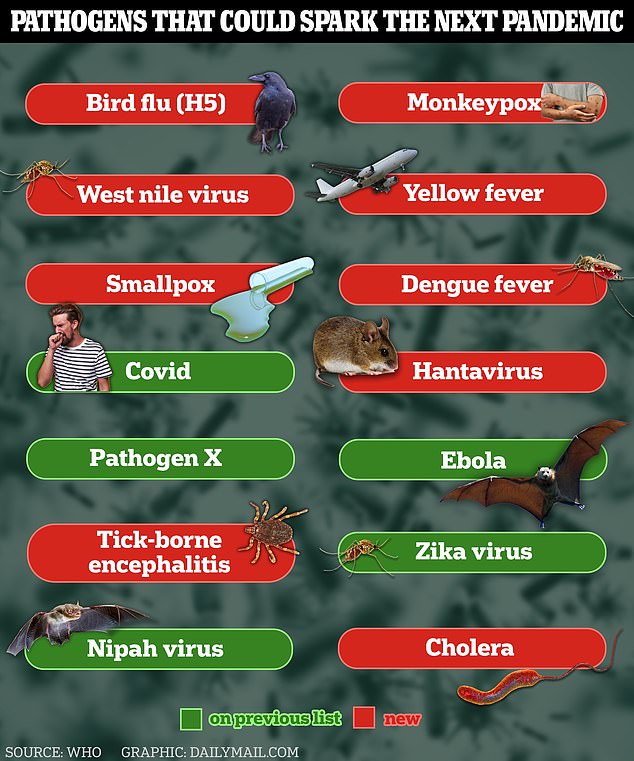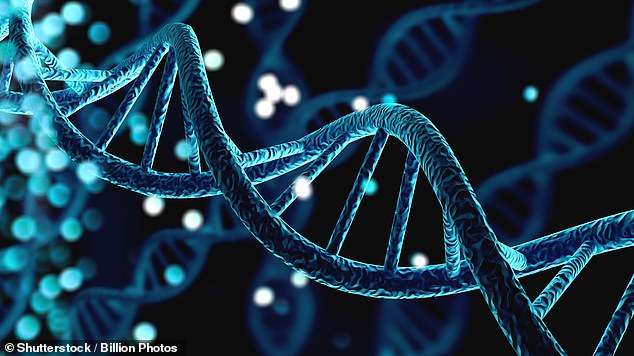Leading scientists have issued an urgent warning about the “unprecedented” risk posed by laboratory-created life that could wipe out humanity.
So-called “mirror life” are synthetic organisms that are built from mirrored versions of molecules found in nature.
Experts warn that these mirror organisms would be “invisible” to life on Earth, allowing them to bypass the immune defenses of all known organisms.
If mirror bacteria escaped from the laboratory, nothing would stop them from establishing themselves in nature and threatening plants, animals and humans with lethal infections.
The creation of mirror bacteria is at least a decade away, but, in a 300-page technical review published in ScienceThe authors note that rapid progress is already being made.
A group of 38 Nobel laureates and other experts, including some who previously tried to create mirror life, are now calling for a pause on all new research.
Dr. Vaughn Cooper, a microbiologist at the University of Pittsburgh and co-author of the paper, says, “This form of life has never existed or evolved, consequently all biological interactions would be different or probably not work.”
“We don’t want to limit the promise of synthetic biology, but building a mirror bacteria is not worth the risk.”
38 leading scientists have issued an urgent warning about “life in the mirror”. It is a form of artificial life in which all biological molecules such as DNA are reflected. In the case of DNA, this means that the double helix would spiral in the other direction (file image)
Just as your left hand is a mirror image of your right, many biological molecules also have a left and right mirror molecule.
What makes this feature so important to biology is that it does not vary from one species to another: the molecules that make up all life on Earth have the same laterality.
For example, the coiled double helix of DNA is right-handed, while proteins are made up of left-handed amino acids.
However, as far as scientists can tell, the fact that our DNA is right-handed is an evolutionary fluke and there is no reason why life should not have evolved from mirrored components.
Thus, although mirror life cannot evolve from life as we know it, scientists believe that it is possible to create an organism in which all biological molecules are reflected.
What would make this so risky is that life on Earth has only evolved to deal with one form of molecule.
Co-author Professor Gregory Winter, a Nobel Prize-winning biologist at the University of Cambridge, told MailOnline: “The risk of mirror life, particularly mirror bacteria, is that living organisms would not recognize their counterparts. mirror as “strangers” and do not have the natural defenses to protect themselves from their attack.

Scientists have called for a pause on the creation of “mirror bacteria” as they could evade the immune defenses of all life on Earth and cause life-threatening infections (file image).
“For example, humans would have difficulty producing antibodies against mirror bacteria and would not be able to control an infection. Similar arguments apply to all other living organisms, including plants attacked by mirror bacteria.’
Likewise, natural predators of bacteria also rely heavily on the prowess of their prey’s molecules to kill bacteria.
This means there is nothing to stop rogue mirror bacteria from escaping into the wild and reproducing uncontrollably.
The authors write: “We cannot rule out a scenario in which a mirror bacteria acts as an invasive species in many ecosystems, causing widespread lethal infections in a substantial fraction of plant and animal species, including humans.”
Even if humans found a way to defend themselves against this new threat, mirror bacteria could still destabilize large parts of the global ecosystem.
Co-author Dr Nicholas Talbot, a plant disease expert and chief executive of the Sainsbury Laboratory, told MailOnline: ‘It seems very likely that a mirror bacteria could infect some plants.
“If major food crops were susceptible, the impact would be devastating, along with other effects.”
The good news is that the technology to create life in a mirror is still far away.
In their article, the authors point out that there have been important advances in the creation of mirror molecules and in the construction of artificial cells.

Unlike most of the world’s deadliest pathogens (illustrated), there would be no way to defend against mirror bacteria. Mirror bacteria could also infect any organism regardless of its species, potentially leading to massive ecological damage and a devastating pandemic.
However, creating synthetic molecules is extremely expensive and would require massive advances in the field of synthetic cell research.
Dr Talbot says: “The technical obstacles to creating mirror bacteria are significant, so it is probably at least a decade away from being possible, but we were concerned enough about the risk that we wanted to establish a public debate about this much sooner. for it to become a reality.’
The researchers call for greater scrutiny of their research and conclude that, unless compelling evidence to the contrary emerges, mirror bacteria should not be created.
While there are some potential benefits of mirror bacteria, such as biological drug synthesis and medical applications, the authors argue that the risks are not worth it.
Dr Cooper concludes: “It would take an enormous effort to build such a body, but we must stop that progress and have an organized and inclusive dialogue about how to govern it effectively.”

